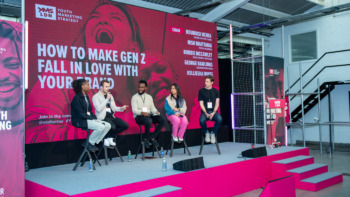Australia is a country renowned for its high intake of international students. We look at how the ongoing border closure will affect student’s spending and the start of the first semester in a few weeks time.
International students in Australia: a quick explainer
Of Australia’s 1.5 million-strong student demographic, a significant number come from international territories. Victoria and New South Wales carry the largest cohort of international students, with around 106,000 and 78,000 attending university in these states respectively.
According to data collected by the Mitchell Institute, international students contribute over $38 billion to Australia’s economy each year and support over 130,000 Australian jobs. In addition, the ABS (Australian Bureau of Statistics) estimates that international students contribute $25 billion to the economy outside of tuition fees.

After months of tough restrictions, coronavirus cases across the country are minimal and Australia is looking a little bit more normal — very positive news. However, to prevent another rise in cases, its borders remain heavily guarded, which makes attending university for new and returning international students a near-impossible feat.
The international education sector in crisis
With months of border restrictions in place, the number of international students in Australia has fallen dramatically. The Conversation recently reported that the number of international student visa holders in Australia at the end of 2020 had declined by almost 195,000, compared to the previous year. Universities have also signalled a decrease in applications from international students this academic year. Since most university courses last for 3 years, the decline in international enrolment for 2021 could equate to some long-term issues for the education sector and the Australian economy as a whole.
Plans to facilitate international students’ travels to Australia are still being discussed, though it is extremely unlikely that new and returning students will make it to campus by the time Welcome Week rolls around in March. Latest reports suggest that a ‘vaccine passport’, which would permit those with proof of vaccination to travel abroad, is under consideration by the government, however, the logistics of this are at a very premature stage.
Nevertheless, data on visa applications shows that interest to study in Australia long-term has not wavered. International students are extremely valuable to university culture, as well as the economy. They will be welcomed back with open arms; right now it is just a question of when.
What does this mean for your marketing strategy?
International students contribute to Australian businesses across a number of sectors – every year 36% ($5.5 billion) of their expenses go towards retail and hospitality alone. With less international students in Australia at present, brands will need to consider how this might influence their marketing strategies for the student demographic going forward.
Our advice? A marketer’s scope should be very broad this year, given the unique and uncertain set of circumstances impacting Australian universities and their students. Make sure your marketing strategy is innovative, exclusive and exciting in order to reach as many students as possible and keep those stuck abroad in the loop.
We know that 80% of Australian students are in paid work, but what do they want to spend their disposable income on? Think fashion, food and fun – Gen Zs need a pick-me-up after the disruptive year they’ve had, so student discounts will certainly be appreciated.
Considering every student’s situation will also help achieve a broader approach to marketing to students this academic year. Some students are returning to lessons on-campus, while others, particularly those who are considered vulnerable, will still be working remotely for their first semester. Meanwhile, existing international students unable to return to Australia are also being encouraged to continue their studies online. Make your messaging positive and inclusive.
Finally, be sure to get involved in national events that attract Gen Zs. With Valentine’s Day around the corner, as well as Welcome Week and the first instalment of Click Frenzy coming in March, brands have plenty of campaign opportunities to grab students’ attention and gain long-term, loyal customers. Of course, a different approach might be necessary this year to ensure you get the best out of your Gen Z marketing and adhere to everyone’s ‘new normal’. Brands, it’s time to get creative.
Contact us now to find out more about how we can help target your marketing to Gen Zs.














